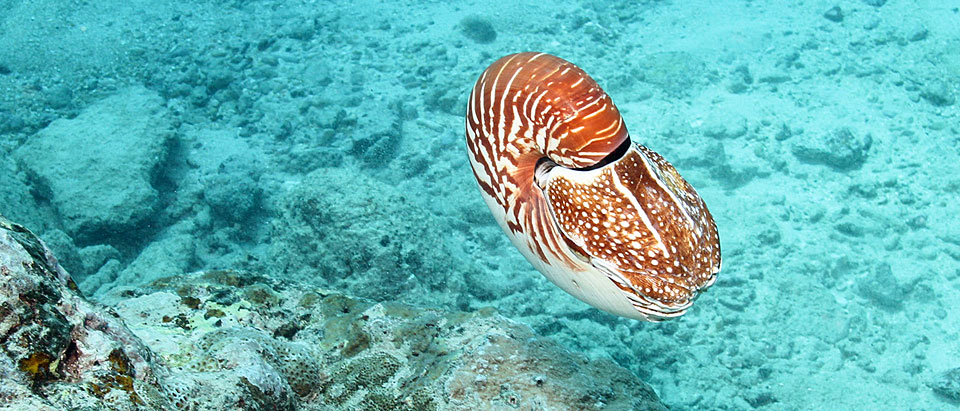
The animal resides in the shell’s largest chamber, while the other chambers function like the ballast tanks of a submarine. This is the secret to how the nautilus swims.
The tissue in a canal called the siphuncle [sigh-funk-el] connects all of the interior chambers. As seawater pumps through the living chamber, the nautilus expels water by pulling its body into the chamber, thereby creating jet propulsion to thrust itself backward and to make turns. While swimming up or down through the water column, the nautilus uses its siphuncle to suck fluid into or draw it out of, the smaller sealed chambers, allowing the animal to adjust its overall buoyancy.
According to fossil records, animals similar to the chambered nautilus have existed for about 500 million years. Although no regulations currently exist to protect them, the six living species of chambered nautilus appear to be in decline. They are trapped mostly for their attractive shells and also for the shell’s inner layer, called nacre, which is used as a pearl substitute in jewelry and trinkets. In 2013, NOAA Fisheries funded a University of Washington researcher to conduct population studies of the nautilus in Fiji and American Samoa. The research should provide a clearer picture of nautilus abundance in those areas.
Source: https://oceanservice.noaa.gov/facts/nautilus.html